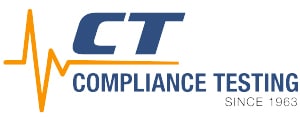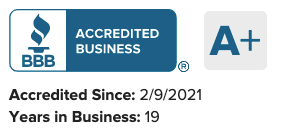Get Free Help From Our Engineers With FCC Compliance
Need help complying with FCC Part 15 or other standards? We work with businesses and individuals worldwide, including in Taiwan, to achieve compliance with Part 15 and other FCC regulations.
Click the “Talk to Our Team” button or call us on 866-540-5287 to ask our engineers your question about FCC testing and compliance, or request a free quote for testing and achieving FCC authorization for your device.

If you’re an electronic device manufacturer or importer, understanding Federal Communications Commission (FCC) regulations is a critical part of gaining market access in the United States.
The FCC regulates electronic devices sold in the US via Code of Federal Regulations, Title 47, or the “FCC rules.” Two of the most significant parts of Title 47 are Parts 15 and 18, referred to as FCC Part 15 and FCC Part 18, respectively.
FCC Part 15 and FCC Part 18 are both focused on stopping electromagnetic interference from electronic devices. Part 15 applies to a wide range of consumer and commercial devices, while Part 18 is more relevant for industrial, scientific and medical equipment.
Below, we’ve discussed the key differences between these two regulations and provided some examples of devices that fall under either Part 15, or under Part 18.
For more information about FCC compliance, or to request a quote for testing your device, you can contact us online or call us at 866-540-5287.
What is FCC Part 15?
FCC Part 15 is a standard that regulates electronic devices sold in the United States. It primarily focuses on restricting electromagnetic interference (EMI) from electronic devices. EMI is a form of noise, or disturbance, that’s emitted by devices and can affect the function of other devices.
For example, a device that emits electromagnetic energy may cause a TV to flicker, a cellphone to lose its connection, or other devices to malfunction.
Part 15 primarily focuses on unintentional radiators — devices that aren’t designed to emit radio waves, but can still cause interference. Some devices regulated under Part 15 are classified as intentional radiators, such as cell phones and Wi-Fi equipment.
Compliance with Part 15 involves testing your device for radio frequency emissions, as well as its ability to resist interference from other devices (referred to as electromagnetic immunity).
Our guide to the FCC Part 15 rules explains Part 15 in more detail, including how the regulation works, as well as the compliance process.
Devices Covered by Part 15
Most consumer and commercial electronic devices are covered under FCC Part 15. Common devices affected by Part 15 rules include:
- Computers and computer peripherals
- Smartphones, tablets and other mobile devices
- Wi-Fi routers and Bluetooth devices
- Certain lighting devices
- Remote controls
What is FCC Part 18?
FCC Part 18 is a section of the FCC rules that regulates industrial, scientific and medical (ISM) equipment that emits radio frequency energy. It applies to medical devices, equipment used in laboratories, and many industrial devices that emit RF energy within certain frequencies.
In addition to industrial, medical and scientific equipment, some consumer electronics devices, such as microwave ovens and induction stovetops, are also regulated under FCC Part 18.
Devices Covered by Part 18
- Medical devices, such as MRI machines
- Kitchen appliances, such as microwaves and induction stovetops
- Industrial equipment and machinery
- RF lighting, including fluorescent lighting
Key Differences Between Part 15 & Part 18
Intentional vs. Unintentional Emissions
FCC Parts 15 and 18 differ in the nature of the RF emissions they restrict. FCC Part 15 covers electronic devices that may emit radio frequency energy unintentionally, while Part 18 primarily covers devices that are designed to use RF energy for normal operation.
Not sure which regulation applies to your device? Our team can assist you in determining the regulations that apply to your electronic device and help you prepare a testing and compliance plan.
Emissions Limits and Testing Procedures
The emissions limits for FCC Part 15 and Part 18 vary significantly. Part 15 has stricter limits on the amount of RF energy that can be emitted by a device, largely due to the higher likelihood of interference with communications devices in a home or commercial environment.
In comparison, FCC Part 18, which focuses on ISM equipment, involves different standards and testing procedures.
Compliance and Certification
Compliance with FCC regulations is mandatory for manufacturers. FCC Part 15 devices usually require an FCC Suppliers Declaration of Conformity (FCC SDoC) or certification to ensure they meet minimum emissions and performance standards.
Part 18 devices, due to their specific usage, may have different certification processes that may involve more specialized testing. Our team can advise you on the key difference in terms of the compliance and certification process for Part 15 and Part 18 devices.
Contact Us About FCC Testing & Compliance
Achieving compliance with FCC Part 15 and/or 18 is a critical step in bringing your electronic device to market. As specialists in FCC compliance, we can test your electronic device in our accredited lab and help you achieve FCC compliance.
To request a quote for FCC Part 15 or Part 18 testing, or to ask our team of FCC compliance specialists and engineers a question, contact us online or call us at 866-540-5287.
Request a Free Quote From Our Team
Please enter your name, contact information, and any information about your device and the type of testing you need into the form below. Our team of engineers and compliance specialists will contact you as soon as possible with a free quote for your project.




